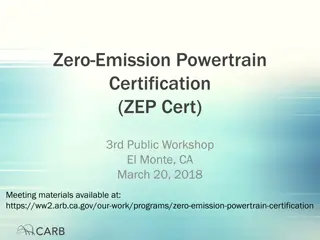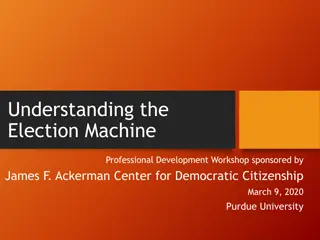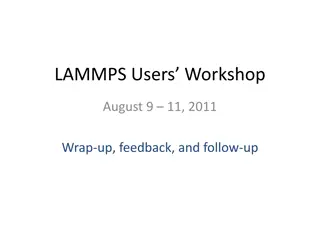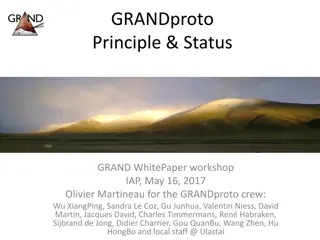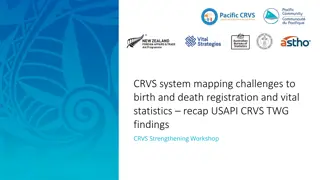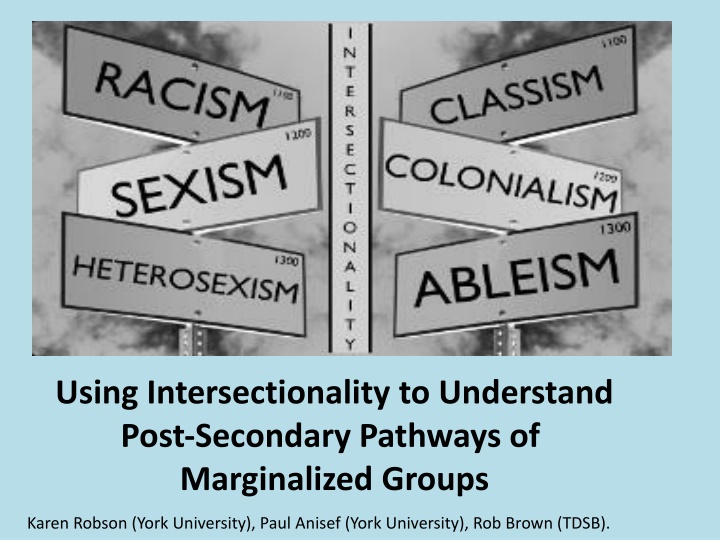
Marginalized Group Pathways Through Intersectionality Analysis
Explore the concept of intersectionality in understanding the post-secondary pathways of marginalized groups using insights from Black feminist thought and social science research in a diverse city like Toronto, Canada. Discover how variables like race, immigration status, and gender interact to influence higher education choices, and delve into the importance of recognizing intersectional dynamics in societal structures to promote inclusivity and equity.
Download Presentation

Please find below an Image/Link to download the presentation.
The content on the website is provided AS IS for your information and personal use only. It may not be sold, licensed, or shared on other websites without obtaining consent from the author. If you encounter any issues during the download, it is possible that the publisher has removed the file from their server.
You are allowed to download the files provided on this website for personal or commercial use, subject to the condition that they are used lawfully. All files are the property of their respective owners.
The content on the website is provided AS IS for your information and personal use only. It may not be sold, licensed, or shared on other websites without obtaining consent from the author.
E N D
Presentation Transcript
Using Intersectionality to Understand Post Secondary Pathways of Marginalized Groups Karen Robson (York University), Paul Anisef (York University), Rob Brown (TDSB).
P. Collins: By embracing a paradigm of race, class, and gender as interlocking systems of oppression, Black feminist thought reconceptualizes the social relations of domination and resistance. Black Feminist Thought: Knowledge, Consciousness, and the Politics of Empowerment, 1990. K. Crenshaw: When we don t pay attention to the margins, when we don t acknowledge the intersection, where the places of power overlap, we not only fail to see the women who fall between our movements, sometimes we pit our movements against each other. Women, Power & Peace conference, September , 2007.
Situating the analysis Toronto is one of the most ethnically diverse cities in the world
Data from Toronto, Canada Constructed from various sources: Survey of all Toronto secondary school students (2006) 2006 Toronto student Census Administrative data from the school board College and university application centers Neighbourhood census information (2001) N=approximately 17,000
Questions of interest How do race, immigration status, and gender interact to impact PSE choices? And once we know these things then what?
Interactions (technical stuff) Many interesting findings in the social sciences involve interaction effects, also known as moderator or synergistic effects Two variables have an interaction effect on a dependent variable if the relationship of either independent variable with the dependent variable changes across values of the other independent variable.
Race/region of origin in our sample Black 11% White 35% E Asian 23% Latin 2% S Asian 21% SE Asian 3% MiddleE 5%
Low neighbourhood income by race/region As percentage of total sample Within-race proportions % in poor lowest quartile of income % of overall sample Proportion living in lowest quartile of neighbourhood inome .5 19% 20% 3% 7% 29% 4% 18% 10% 23% 2% 5% 21% 3% 37% Black E Asian Latin MiddleE S Asian SE Asian White .4 .3 .2 .1 0 Black E Asian Latin MiddleE S Asian SE Asian White
Generation status and race/region Race and generation cannot be separated from each other .8 .6 .4 .2 0 Black E Asian Latin MiddleE S Asian SE Asian White First Generation Second Generation Third Generation
Generation status and low neighbourhood income First generation Second Generation 33% Third Generation 22% 10% Generation and income cannot be separated from each other.
Generation status and race/region by lowest neighbourhood quartile .8 .6 .4 .2 0 Black E Asian Latin MiddleE S Asian SE Asian White First Generation Third Generation Second Generation
PSE Confirmations by Race .8 Proportion confirmed PSE .6 .4 .2 0 Black E Asian Latin MiddleE S Asian SE Asian White
Confirmations by Race Race and PSE pathways differ according to type of institution .8 .6 Proportion Confirmed .4 .2 0 Black E Asian Latin MiddleE S Asian SE Asian White College University
Sex by PSE confirmations males females Confirmed university Confirmed college acc 25 Did not confirm Ontar 35 48 59 15 16
Confirmations by Race and Gender Gender is also a major determinant of type of PSE transition Males Females .8 .6 .4 .2 0 White White Black Black Latin Latin E Asian S Asian E Asian S Asian MiddleE MiddleE SE Asian SE Asian College University
Multinomial logistic regression (South Asian Students) 0.8 0.7 0.6 0.5 0.4 university college 0.3 0.2 0.1 0 SA male, no sn, not in lowest SA male, no sn, lowest SA male with sn, lowest SA female, no sn, not in lowest SA female in lowest SA female in lowest with sn
Multinomial logistic regression (Black students) 0.8 0.7 0.6 0.5 0.4 university college 0.3 0.2 0.1 0 black male, no sn, not in lowest black male, no sn, lowest black male with sn, lowest black female, no sn, not in lowest black female in lowest black female in lowest with sn
Multinomial logistic regression (white students) 0.8 0.7 0.6 0.5 0.4 university college 0.3 0.2 0.1 0 white male, no sn, not in lowest white male, no sn, lowest white male with sn, lowest white female, no sn, not in lowest white female in lowest white female in lowest with sn
Average Probabilities of Confirming College - Interaction of Black*SEN*Applied 0.45 0.4 0.35 0.3 0.25 0.2 Not Black Black 0.15 0.1 0.05 0 Without SEN and not in applied With SEN, not in applied Without SEN and in applied With SEN and in applied
Conclusions (?) PSE trajectories affected by range of characteristics Mustn t forget the gappers How can policy be targeted?
Thank you! klrobson@yorku.ca Ontario Ministry of Training, Colleges and Universities financially supports this research
References Choo, Hae Yeon, and Myra Marx Ferree. "Practicing Intersectionality in Sociological Research: A Critical Analysis of Inclusions, Interactions, and Institutions in the Study of Inequalities*." Sociological Theory 28.2 (2010): 129-149. Dubrow, Joshua Kjerulf. "How can we account for intersectionality in quantitative analysis of survey data? Empirical illustration for Central and Eastern Europe."ASK. Research&Methods 17 (2008): 85-100. McCall, Leslie. "The complexity of intersectionality." Signs 30.3 (2005): 1771-1800. Patricia Hill Collins, 1990. Black Feminist Thought: Knowledge, Consciousness, and the Politics of Empowerment (Boston: Unwin Hyman).








